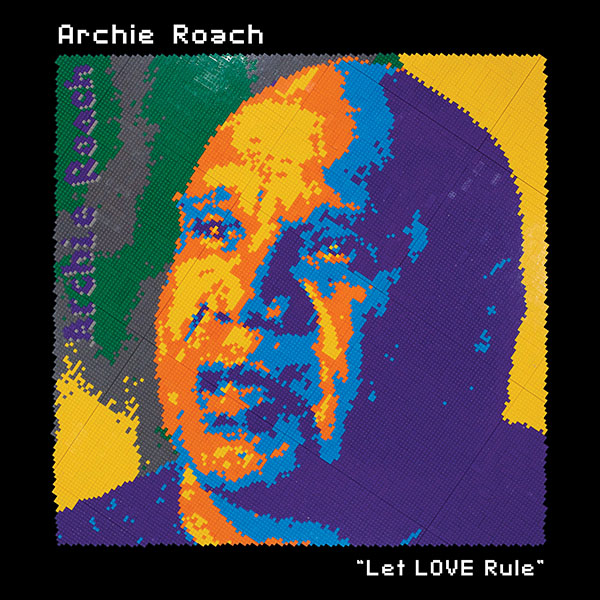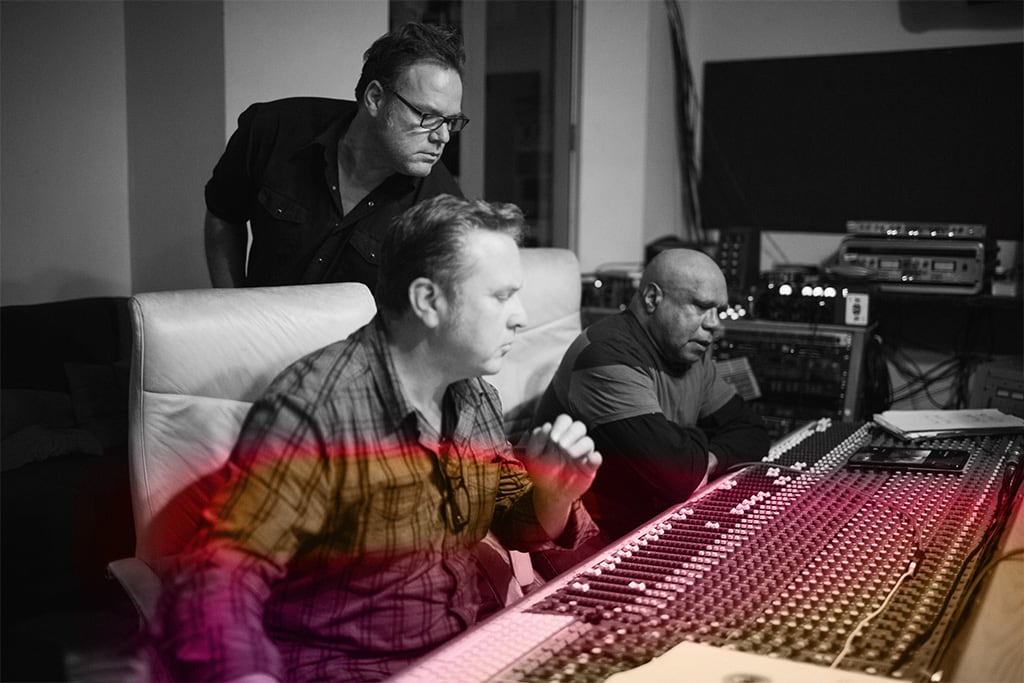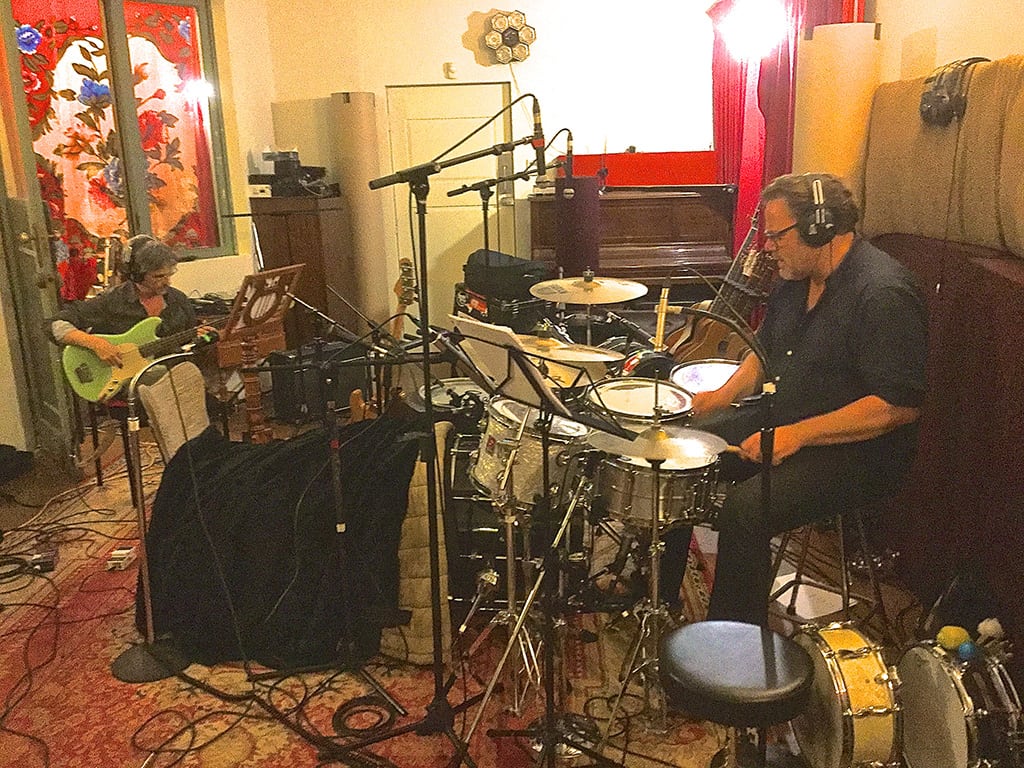
Leading With Love
Archie Roach took his latest album slow to let the right collaborators fill the gaps, including a makeshift children’s choir.

Artist: Archie Roach
Album: Let Love Rule
Archie Roach was warm but subdued when talking about his new album Let Love Rule. As a heralded activist not shy of engaging with tough lyrical content, like the domestic abuse-confronting ballad Walking Into Doors, out of he and producer Craig Pilkington, I’d expected Archie to take the lead. Instead, he deferred to Pilkington. I guess Archie’s stock in trade has always been a contemplative, soulful gravitas.
He wouldn’t attribute it to having half his lung removed either — the result of a multi-year battle with cancer — because Roach doesn’t idealise his hardships, he exorcises them by telling their story. Mostly through song, but any means will do. Earlier this year he joined his doctor, Lou Irving, onstage at the World Indigenous Cancer Conference to discuss his recovery from lung cancer. It was part of a program designed to shed light on disparities of care for indigenous people around the globe. Even his personal battles aren’t kept personal if he can use them to help someone else.
Like the rest of his life — whether it’s been his stolen childhood or the grief of losing his wife and soulmate, Ruby Hunter — Archie has learnt to work with this latest hand he’s been dealt. “My voice isn’t quite the same as it was when I was younger,” reminiscedArchie, “so I’m exploring different parts of my voice and using it a little differently, but still conveying the same depth of meaning.”
On Let Love Rule, Archie turns his attention to universal themes. Love; but a healing, not romantic love. One that leaves the specifics of pain at the door to answer a global exhortation to ‘forgive and forget’. Each song sounds like the urging of a man who knows that hanging onto the past will only eat you up.
The album cover uses an image of Ai Weiwei’s recent Letgo Room installation at the National Gallery of Victoria. A cuboid room with portraits of Australian human rights activists — accompanied by their own words — built into its walls and ceiling. Archie’s quote, ‘Let Love Rule’ is a phrase he’s been saying for years now, the album is another paragraph added to a statement that feels especially pertinent today.
“Even though you can go back through the years I think it relates more to today,” said Archie. “What’s been happening in the world, how it affects us as a country and how we’ve become less inclusive. We travelled overseas recently and played in Monaco, but in order to get to Monaco, we had to land in Nice. It was recently after that tragedy happened in Nice on Bastille Day. It’s all got to do with things like that, songs like No More Bleeding… there’s got to be a better way.”

SOUL IN THE BLOODSTREAM
Pilkington produced Archie’s previous album, Into the Bloodstream, which followed a gospel heading and looked to Solomon Burke’s phrasing as a source of inspiration. Archie wanted to continue that search into more soulful territory on Let Love Rule.
Most of the record was recorded in Melbourne at Pilkington’s Audrey Studios. Now situated in Coburg, Archie has a long history with the studio as Ruby was one of the first artists to record at Audrey’s original North Richmond location back in 1999. The timeframe for the record was purposefully stretched out, a slow deliberate approach allowed the pair to accommodate all of Archie’s desired collaborators, including a makeshift children’s choir flown into Melbourne from around the country for a weekend workshop with soprano and composer, Deborah Cheetham. “The timeframe allowed us the ability to evaluate things and have a few goes at some songs,” Pilkington explained. Arrangements would naturally evolve from a starting point of guitar and vocal. Then as the pair discussed the song’s intent in pre-production, potential collaborators would pop into Archie’s mind. “Whereas previously if you’re booked into a studio for two weeks, the people you planned to come in during that time are the people that play on it and that’s it,” said Pilkington. “Because of the intensity of the lyrics and vocals, we ended up stripping some arrangements back to let that really shine. Even when we were 90% there, Archie would have another go at a vocal if he thought he could do it better.” No More Bleeding went from a bombastic power production to relying on Archie’s voice with the children’s choir as backing. “We replaced the canons with the children!” laughed Pilkington.
When someone walks in with a guitar and says I’ve written this song about domestic violence, I don’t know what any producer would say as their default, ‘Well, this is what we do for domestic violence songs!


Archie’s voice, which he describes as “a bit more gravelly”, has always been the anchor of his songs. He’s been lucky enough to work with producers who understand that. Pilkington gave the example of David Bridie’s work on Walking Into Doors: “When someone walks in with a guitar and says I’ve written this song about domestic violence, I don’t know what any producer would say as their default, ‘Well, this is what we do for domestic violence songs!’ Bridie’s approach to the piano-based song, was to add this beautiful, powerful, mournful cello line that’s very dignified. In Archie’s productions, any power can’t be brutal, it has to have a strong dignity to it.”
That consideration for Archie’s central role made arranging easy, but Pilkington occasionally found himself having to coax a bit more out of the musicians who were almost too respectful. “Steve Hadley, is an incredible bass player, he was really aware not to get in the way or distract,” said Pilkington. “If anything, I’d be asking him to play just a little bit more. It’s the same with Bruce Haymes’ piano playing. He’s very respectful of what’s going on in the song and aware that everything we’re doing is in a supportive role.”

LAYING IT DOWN
After the pre-production, the bulk of the main tracking was recorded live at Audrey Studios, with Pilkington playing guitar, Archie singing, Steve Hadley on bass, and Dave Folley on drums. “Wherever possible we were trying to get the interaction of the instrumentalists listening to Archie,” said Pilkington. “I prefer to do it with a band,” agreed Archie. “It just feels better than layering it too much one over the other.” While tracking with the band, Archie used a handheld Neumann condenser, then Pilkington shifted him to a U47 FET through the Sebatron valve preamp for any re-tracking.
Sometimes Bruce’s piano parts would be laid down live too, using Audrey’s 1980 Yamaha baby grand. Pilkington set up a pair of Beyerdynamic M160 ribbons, which “have a fantastic way of capturing the top end that’s not brittle or harsh,” and a Neumann U47 or KM86 set back off the piano to let the bottom end develop. The lightweight M160s also let Pilkington fiddle with their positioning over the hammers without fear of them drooping onto the strings. He changes the positioning to suit the voicings from song to song. “People have become so used to hearing fake or sampled pianos that have so much exaggerated top end. We’re really looking for the tone,” he said. “The thing about those sampled pianos is everything is perfect, but what you don’t hear is the harmonic interaction between a string that’s open and another note that’s being played. We really try to capture those harmonics in the mid-range that create the unique aspect of what’s being played at the time.”
As for the how much space to put between the condenser and piano, “it never works how you think it’s going to work in theory,” reckons Pilkington. “Because there are other instruments in a space, you might have to have one much drier than you would think for it to sound like it’s at a particular distance. It’s a matter of working out what your starting space is and placing things relative to that. On a few of those songs the piano was the starting space.”
CHOIR MOVES
Dave Folley does a lot of work at Audrey, so he leaves his maple-shelled Premier drums permanently set up. Up close, Pilkington places Sennheiser 441s over the toms, Beyerdynamic M160s again as overheads, a mic in the hole for the kick beater, and a U47 in a blanket tunnel placed a metre away from the resonant head to catch the bottom end where it’s developed, rather than trying to boost it in the mix. “A lot of it comes down to the tuning,” said Pilkington. Audrey also has an elaborate system of pre-installed room mics to choose from. “We’ve got an old ’50s Reslo ribbon mic pointed away from the kick, and we’ve always got a couple of room mics attached to a boom on the ceiling. It’s more to save on floor real estate than anything else.”
For the double bass, Pilkington would always use a Peluso valve mic, occasionally paired with a Shure SM57 down the bottom for its proximity effect. He would whack a padded down Mann M21 condenser on one guitar amp, and a 57 on the other.
Audrey isn’t huge, but it comfortably handles a band. Pilkington isn’t afraid of stretching out the space to bigger projects too. In the past, they’ve had a 15-string ensemble record in the live room, and a 20-person musical recently recorded their cast album there. “It’s good because it’s not an enormous space,” said Pilkington, “but the design is very adaptable and versatile with room for the sound to develop.”


They did have to relocate to the Salon at the Melbourne Recital Centre in order to record the choir singing two of the album’s songs. “I had rehearsed there with an orchestra for a Gurrumul Yunipingu concert and it was such a beautiful room to play music in,” recalled Pilkington. “I knew we’d be able to use the room in the final product.” He set it up with a spaced out series of directional mics picking up the different choir sections, then staggered two stages of room mics placed at different distances from the choir to capture the ambience. “Then it was a matter of keeping everyone else really quiet,” said Pilkington. “Camera guy and record company, a couple of parents, but it seemed to work.”
The kids were only down for the weekend, and the venue hire wasn’t trivial. To minimise the risk, Deborah had rehearsed both songs with the choir but when everyone had arrived, “Archie came in and spoke about the ideology of the album and what he was representing in these songs lyrically,” explained Pilkington. “That really helped guide them.” The song No More Bleeding, which was stripped back from its power production, was fully re-recorded on the spot with the choir. Archie sang, Pilkington played guitar and Steve Hadley was on the double bass while the choir sang. Each of them had a sneaky click track in one ear so they could quickly check between playlists to make sure they had a full take.
“Throughout the day there were a series of intense takes where everyone felt the energy,” said Pilkington. “They got a lot out of the day singing with Archie. Archie got a lot out of the day. Steve Hadley reckons it was the most spiritual experience he’s had recording music. It was high risk but high gain.”
Love is like that. Risky, but rewarding.
















RESPONSES